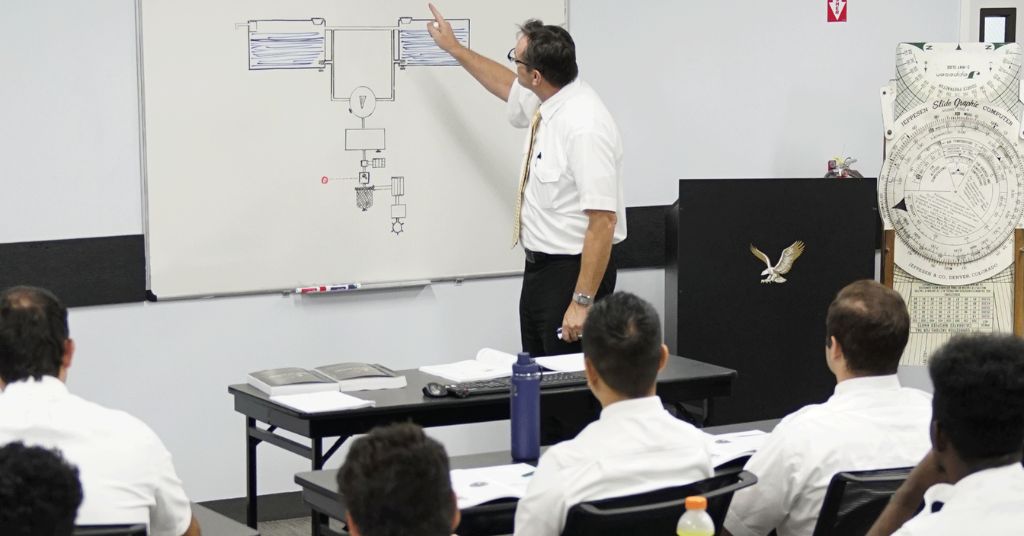By Steven Daun, National Chief Pilot
I guess you can say I am a little biased, but who wouldn’t want to work in aviation? Yet most people seem to think that if they aren’t cut out for being a pilot, and they don’t want to be a flight attendant or mechanic, then they’re out of options.
Truth be told, pilots, flight attendants, and mechanics make up a very small part of the aviation industry. When asked about other opportunities, I start my explanation by stating that aviation is two industries in one. You have general aviation, and you have commercial aviation. While general aviation makes up over 80 percent of the aviation industry, commercial aviation has a much greater financial footprint.
To adequately explain the various career paths in general and commercial aviation — the ones that don’t involve being a flight attendant or pilot – we can divide the career opportunities into four areas: (1) operations, (2) flight operations, (3) training, and (4) maintenance. It isn’t difficult for anyone to find the career of their dreams within one of these four areas. Let’s take a look at each area and its respective roles.
Operations deals with all the logistical planning to make a flight happen. This includes scheduling people and equipment, coordinating equipment with flight operations, ensuring that training and maintenance are up-to-date, analyzing weather, planning for contingencies, and coordinating with the airport and the FAA.
Flight operations includes all the logistics of dealing with pilots, flight attendants, aircraft, flight planning, routing, contingency planning, and coordinating with operations, air traffic control, and the FAA.
Training sometimes falls under either operations or flight operations, but in many cases it is a separate department altogether. Training includes the scheduling and instruction of ground crew, flight crew, and mechanics, including the training curricula used. For me, one of the most enjoyable things about being part of a training department is the participation in the integration of new equipment. You are tasked with determining what people will do with the new equipment and understanding how they will do it. When considering new aircraft, you must gain full knowledge of the systems and performance of the aircraft so that you can develop and integrate new checklists and procedures into your operation.
Maintenance includes all of the logistics associated with maintaining an aircraft. This includes on-demand maintenance when something unexpected needs to be fixed, as well as routine maintenance such as regularly scheduled inspections. The maintenance department also works with the manufacturers to ensure that new aircraft meet the specific needs of the organization.
As you can see, there are many different opportunities in aviation, covering a wide range of skills and interests. The best way to begin to identify which aviation career path is right for you is to consider what you enjoy. What motivates you? What are your hobbies and unique skill sets? Once you answer these simple questions, you must determine if you like big or small airplanes. Then you can begin searching for the opportunities that offer the best match for your interests.
The general aviation industry includes flight schools, charter companies, corporate flight departments, aircraft maintenance companies, governmental flight departments, flight dispatch companies, testing companies, and manufacturers. You can now add space operations into this mix as well.
In the commercial aviation industry, there are air carriers, training companies, aircraft maintenance companies, flight dispatch companies, leasing companies, aircraft ferry companies, and manufacturers.
And all of that is without even discussing the financial services side of the industry, which includes banks, leasing companies, insurance companies, and more.
One of the best ways to test out career options is to take part in something like the American Flyers sponsorship program. These types of programs will give you insight into the various departments of an aviation organization and enable you to figure out which path is right for you. You can read about the sponsorship program in this edition of The Pilot’s Digest.
Now that you’ve gotten an overview of the various options available to you in aviation, I’d like to take a moment to discuss how to secure a successful and satisfying career. From personal experience, I can sum it up in three words: “Never say no.” That is, never say no to an opportunity. As lackluster as it may seem at the time, you must tell yourself that it is a temporary step on the way to reaching your goals. By never saying no, you will stand out as the “go to” person that every successful organization needs. This also ensures that your education and knowledge are well-rounded and well-suited for something bigger and better when the opportunity presents itself. Owners and managers take notice of this unwavering devotion and support, and if you are dependable and consistent, their appreciation will bear fruit in new challenges, greater responsibilities, and opportunities to grow and progress in your chosen career.










